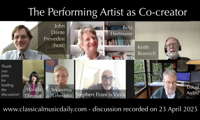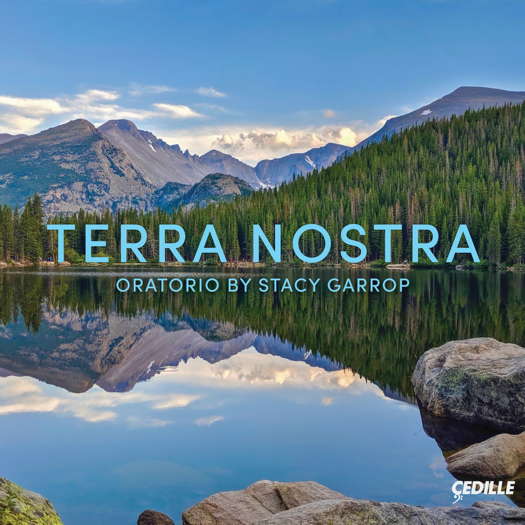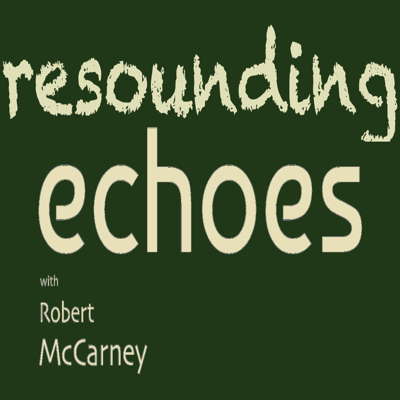 DISCUSSION: What is a work? John Dante Prevedini leads a discussion about The performing artist as co-creator, including contributions from Halida Dinova, Yekaterina Lebedeva, Béla Hartmann, David Arditti and Stephen Francis Vasta.
DISCUSSION: What is a work? John Dante Prevedini leads a discussion about The performing artist as co-creator, including contributions from Halida Dinova, Yekaterina Lebedeva, Béla Hartmann, David Arditti and Stephen Francis Vasta.

A Kind of Reconciliation
KEITH BRAMICH enjoys his journey through Stacy Garrop's oratorio 'Terra Nostra'
'... powerful, quirky and beautiful by turns, given life by the soloists, chorus and the varied orchestral accompaniment ...'
Humanity's most influential governments and other political systems appear to be failing to push through the necessary changes to save our planet. Whether this is due to the incessant lobbying of oil and gas companies, thirsty for profit, or to resistance by ordinary people to the increased taxation and reductions in everyone's quality of life necessary to implement those changes in a timely fashion remains to be seen. Regardless of the cause, many of we humans are burying our heads in the sand and continuing as if there is no climate crisis.
Even before listening to the 2015 oratorio Terra Nostra ('Our Earth') by American composer Stacy Garrop (born 1969), her solution to our planetary crisis seems obvious just from reading the names of the oratorio's three parts - Creation of the World, The Rise of Humanity and Searching for Balance - in Garrop's words, a 'harmonious balance'.
Cedille Records' 2023 recording of Garrop's Terra Nostra was planned for release last month on Earth Day - 22 April 2024.
Stacy Garrop's biography states that her music is centred on dramatic and lyrical storytelling, which is exactly what we have here, on a grand scale, in a style which is accessible and fairly conservative-sounding. What she has created here is powerful, quirky and beautiful by turns, given life by the soloists, chorus and the varied orchestral accompaniment, all held together by conductor Stephen Alltop. In spite of its name, the Northwestern University Symphony Orchestra appears to consist, from the list in the booklet, of thirty-five musicians, at least for this album, so is in fact here a chamber orchestra. It doesn't sound at all underpowered on the recording, however!
Part I, The Creation of the World, tells the story from various different points of view, using texts from the Jewish/Christian bible and Egyptian, Indian and North American creation myths. It also celebrates the beauty and diversity of our planet, and the passing of time before the arrival of mankind. The very opening of the work, to my mind, also hints at something of the secular 'big bang' type theory of creation.
Listen — Stacy Garrop: In the Beginning (Terra Nostra, Part I)
(CDR 90000 227 track 1, 0:00-0:28) ℗ 2024 Cedille Records :
I noticed some textual mistakes, either in the libretto or the performance. In the choral second movement, for example, at the end of the first stanza, Edna St Vincent Millay's words (and Garrop's libretto) read as follows:
World, world, I cannot get thee close enough!
The chorus, drawn from several university groups, actually sings a partial reprise of the opening words:
World, world, I cannot hold thee close enough!
This could be Garrop's adjustment of the text, because, in the fourth movement, where she has rearranged and repeated phrases from the text, the libretto seems to quote the original poem, rather than what's actually heard. But these are very minor quibbles.
Part II, The Rise of Humanity, is considerably shorter than Part I, and it seems to be over even quicker. Following the initial setting of Tennyson's Locksley Hall, looking forward to a world of wonder and change, three short and fast movements propel us through some of humanity's achievements - trains, fast cars and flight.
Listen — Stacy Garrop: High Flight (Terra Nostra, Part II)
(CDR 90000 227 track 9, 0:01-0:46) ℗ 2024 Cedille Records :
Things then begin to take a turn for the worse with one of the negative aspects of progress - deforestation. This is represented by Gerard Manley Hopkins' Binsey Poplars, in a strange, ethereal setting, sung here by soprano and mezzo soloists Michelle Areyzaga and Leah Dexter.
Listen — Stacy Garrop: Binsey Poplars (Terra Nostra, Part II)
(CDR 90000 227 track 10, 0:00-0:58) ℗ 2024 Cedille Records :
Part II ends with a final dirge on the realisation that 'the world's wrong'. Shelley's words mention wind and rain, but glissandi and other effects in the music somehow almost make me feel sick.
Listen — Stacy Garrop: A Dirge (Terra Nostra, Part II)
(CDR 90000 227 track 11, 1:45-2:45) ℗ 2024 Cedille Records :
Part III, Searching for Balance, begins with more of the same, in a sense. Byron's dream of Darkness, ending with the words 'and all was black', serves as a warning of what might happen. Esther Iverem's 1994 Earth Screaming provides a more contemporary understanding of what's happening to our planet, in a dramatic, frightening setting for tenor and baritone soloists - Jesse Donner and David Govertsen, respectively.
Listen — Stacy Garrop: Earth Screaming (Terra Nostra, Part III)
(CDR 90000 227 track 13, 2:00-2:58) ℗ 2024 Cedille Records :
Wordsworth's The World Is Too Much With Us, sung by all four vocal soloists and the chorus, raises the notion that humanity is completely at odds with the needs of the planet we live on, and that we don't care. The music is suitably cataclysmic, rising to a climax.
Listen — Stacy Garrop: The World Is Too Much With Us (Terra Nostra, Part III)
(CDR 90000 227 track 14, 1:57-2:26) ℗ 2024 Cedille Records :
Then, in complete contrast, comes Wendell Berry's gentle and reflective The Want of Peace, perceptively lacking 'the peace of simple things'. In an article posted on the Cedille Records website, Stacy Garrop talks about composing this work, and how this late addition to the text 'became the heart and soul of the oratorio'.
Listen — Stacy Garrop: The Want of Peace (Terra Nostra, Part III)
(CDR 90000 227 track 15, 0:00-0:50) ℗ 2024 Cedille Records :
And here the oratorio turns a corner: the mood changes and the words and music become optimistic. The connecting themes of these last three movements seem to be the poet Walt Whitman, a sense of peace and wonder, and grass! First comes Whitman's reflective A Child said, What is the grass? in Garrop's ethereal otherworldly setting. Then There was a child went forth every day is positively uplifting and joyful, as Whitman's words describe the child who becomes the natural objects that he looks at.
Finally, in A Blade of Grass / I bequeath myself, Stacy Garrop, selecting from more than one Whitman poem, achieves a kind of reconciliation between us and our planet: 'I bequeath myself to the dirt to grow from the grass I love ...' She cleverly links the grass-themed text back to the Whitman setting at the end of Part I, and it's fairly clear that the search for balance isn't over, that it may yet cost us dearly, and that it may not even be successful ...
Listen — Stacy Garrop: A Blade of Grass / I bequeath myself
(Terra Nostra, Part III)
(CDR 90000 227 track 18, 4:27-5:17) ℗ 2024 Cedille Records :
As I fast approach my biblical and Shakespearean age of 'three score and ten', I'm expecting not to be around, polluting this planet, for too much longer, but isn't it also reasonable to expect humanity itself to have a finite lifespan? To finally let the grass grow through all that asphalt and concrete and to give the planet and the other creatures here their space back? Or is this concept too dangerously 'woke'?
Copyright © 25 May 2024
Keith Bramich,
Kent, UK




